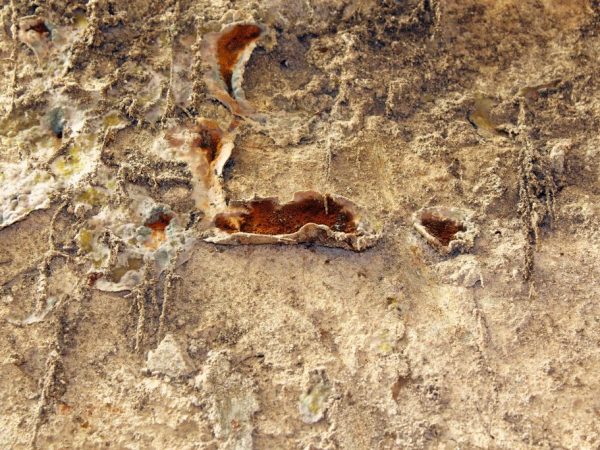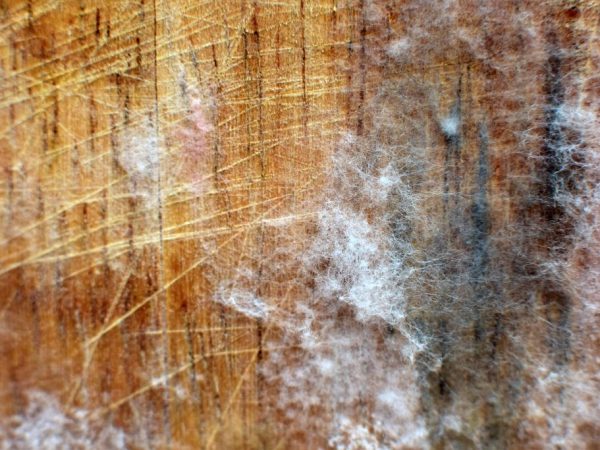How to deal with a mushroom house
The mushroom house is a typical wood destroyer. It does tremendous damage to buildings made of wood. It is activated in high humidity conditions. When it appears, it requires immediate intervention.

Fighting the mushroom house
Botanical characteristic
The fruit body of a real house mushroom is lamellar, plate-shaped, wide. It can grow up to a meter in diameter. Has a fleshy leathery structure. Initially, the color is white, then in places it turns red-yellow, later - brown with a rusty tint. The surface is covered with worm-like folds on which spores are located, or it looks like a speckled sponge. Like other mushrooms, it forms a strongly growing mycelium in conditions that are not conducive to fruiting (the formation of fruiting bodies).
Irina Selyutina (Biologist):
A real mushroom house is one of the few species of mushrooms that have moved to coexistence exclusively next to humans and are no longer found in the wild. The fungus spreads very quickly and it takes about a year for the floor or beam to completely rot, and in some cases up to six months. Fleshy-membranous fruiting bodies usually appear on the lower surface of rotten wood. Their presence indoors and clearly visible to humans is a sign of widespread and severe damage to wooden structures.
Basidiospores form on the surface of the fungus in huge quantities and can sometimes be seen on the floor or in the corners of the room as brown dust. The surface area of the mushroom is 1 cm2 can allocate up to 35 million disputes per day. This process (sporulation) occurs most actively in spring and in the first half of summer.
In addition to a real house mushroom, the white house mushroom can also cause serious damage, which, unlike a real brownie, is able to live in the forest on stumps, trunks, as well as coniferous wood, most often pine. It is capable of causing violent destructive rot when settling in buildings.
The mushroom house is inedible.
Harm
The damage from the parasitic wood destroyer is due to the fermentation process in which woody organic matter dissolves. Under its influence, the destruction of wood layers, loss of density and color change occurs.
The mushroom house prefers deciduous (more often oak) and coniferous trees.
The smell emanating from rotting fruit bodies and spreading fungal spores are the cause of a number of allergic reactions, respiratory diseases and asthma attacks.
Causes of appearance and symptoms
The house mushroom develops an abundant mycelium under a combination of conditions favorable for fruiting, including:
- high humidity, from 80% and above;
- warm air from + 18 ... + 23 ° С;
- stale stale air;
- lack of necessary lighting.
Irina Selyutina (Biologist):
Experts identify the following groups of causes of infection:
- Improper construction of buildings when:
- The insulation of wooden structures from the foundation is not well done.
- Condensation moisture builds up near the water pipes.
- Melt water or rainwater gets into the basement or under the walls.
- Negligence in the operation of houses:
- Untimely roof repair.
- Defective ventilation in damp rooms.
- Water supply leaks, etc.
All this inevitably leads to the constant accumulation of dampness and the creation of favorable conditions for the development of the house mushroom.
Most often, the medium of mass appearance is dark and stuffy basements and cellars, places near beams, the lower surface of floorboards in contact with the soil layer.
Infection of healthy wood with a fungus also occurs when it comes into contact with a work tool or work clothes during construction work, on which there are already fungal spores.
Another way to transmit fungus is to store old wood near newly built structures.
Symptoms
Initially, the appearance of a dangerous fungus is indicated by small whitish dots, which after some time merge into large mucous spots or "woolen" plaques. With further development, a plexus of a spider web and a silvery color is formed, which constantly grows, gradually covering the entire surface of the tree, thickens, acquires a gray color and silkiness.

The fungus can cover the entire surface of the tree
With the advent of the wood destroyer, other varieties of fungal parasites often come.
From the edges of the mushroom fruiting body, threadlike formations moving along the wood begin to depart. This happens even through cracks and holes in seemingly inaccessible stone walls: they are constantly looking for food. The wood turns brown as it breaks down, over time it turns into dried dust, brittle and fragile. Sometimes such branching of mushroom hyphae leads to the collapse of the structure.
Particularly easily under the influence of the parasite, floorboards covered with oil paint are destroyed, the underside of which is not illuminated and does not dry out, constantly in contact with the soil surface.
Wood infected with a fungus is deaf when tapped, and breaks when pressed. Becomes hygroscopic by actively absorbing water. In this way (moving through wood) water gets into the most distant parts of the house. Since the mushroom itself is characterized by the ability to transfer water, then it can easily make the driest room damp and unsuitable for life.
Control measures and prevention
Measures to combat a wood destroyer are applied immediately when symptoms of its appearance appear.
Antiseptics
Fungicidal preparations are effective means of helping to get rid of the house fungus. However, they are used with restrictions, since the toxic effect on humans and animals is great.
Commonly used methods include:
- impregnation with a mixture of wood and coal tar - creosote;
- treatment with carbolineum;
- coating with tar and petroleum.
Mechanical methods
The mechanical method helps to get rid of the fungus at different stages:
- with shallow ingrowths of fungal mycelium, only the upper woody layer is cut off, the surviving residue is treated with an antiseptic;
- with deep damage to wood in the fight against the house fungus, only the removal of the entire infected fragment, followed by treatment of the trimmed edges with antiseptic agents, helps.
Disinfection
An environmentally friendly way that it is permissible to fight the parasite without harming the environment and humans is currently ultraviolet irradiation, carried out in the process of regular quartzing of the room. A strong dose of ultraviolet light kills fungal mycelium and spores.
Prophylaxis
The best way to fight the house fungus is prevention:
- At the end of construction work in buildings where the fungus is recorded, working tools and overalls are treated with disinfectant solutions.
- Old wood with traces of contamination is not used for construction. It is isolated from fresh material and subsequently incinerated.
- In the construction process, well-dried wood treated with special antiseptic impregnations is used.
- Floors in buildings are not laid close to walls to ensure proper air draft under the floor. In this case, coarse sand or a brick mixture is used as an underground pillow, avoiding ash, coke, humus masses and other materials with an alkaline environment.
- The newly built structure must be dry before painting with oil paints.
Conclusion
The mushroom house is a harmful wood destroyer that can completely destroy wooden structures. When the first signs of damage to wood by this fungus appear, it is necessary to immediately take measures, which include mechanical, antiseptic and chemical properties of exposure. Prevention allows you to effectively fight the house fungus.



